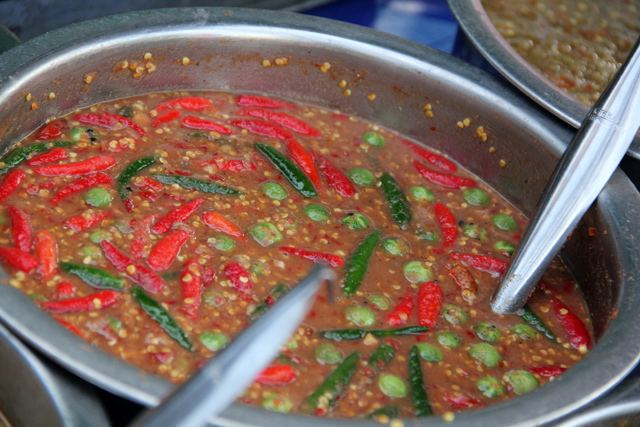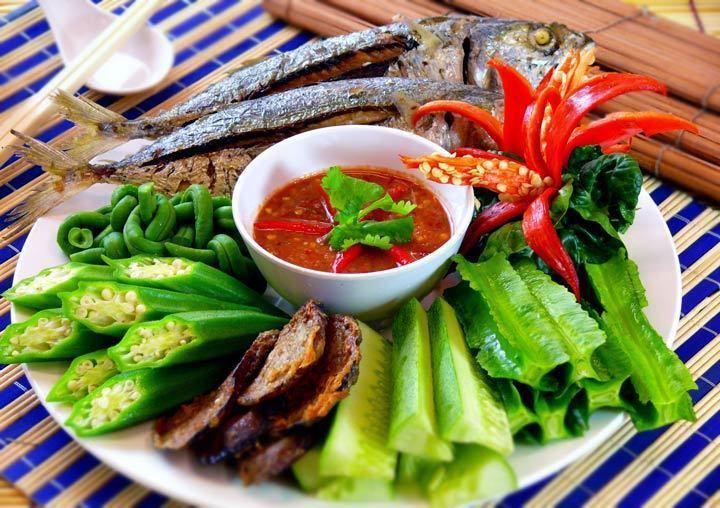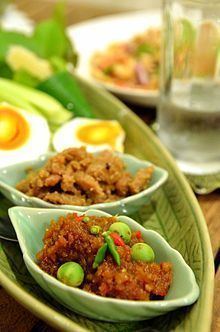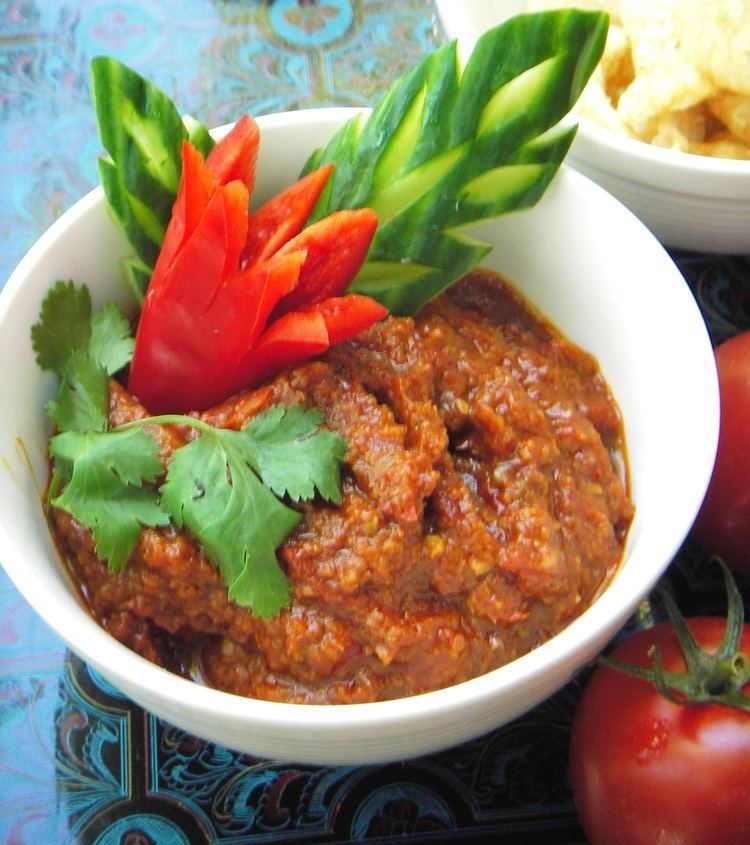Alternative names น้ำพริก | Type Dip or hot sauce | |
 | ||
Similar | ||
Nam phrik (Thai: น้ำพริก, [nám pʰrík]) is a generic term that may refer to any of the types of more or less viscous, spicy, chili-based, hot sauces typical of Thai cuisine. Usual ingredients for nam phrik are fresh or dry chilies, garlic, shallots, lime juice and often some kind of fish or shrimp paste. In the traditional way of preparing the sauce, the ingredients are pounded together using a mortar and pestle, with either salt or fish sauce added to taste.
Contents

Nam phrik is normally served on small saucers placed by the main dish as a condiment or dip for bland preparations, such as raw or boiled greens, fish, poultry and meats. Depending on the type, the region and the family that prepares it, nam phrik may vary in texture from a liquid to a paste to an almost dry, granular, or powdery consistency.

Instead of khrueang kaeng or phrik kaeng, the words nam phrik can also be used to denote Thai curry pastes such as in nam phrik kaeng som for kaeng som or nam phrik kaeng phet for kaeng phet.

History

The first Westerner to report of nam phrik was Simon de la Loubère, a French ambassador to the court of Ayutthaya. In 1687–88 he noted that it contains "a mustard like sauce, which consisted of crayfish corrupted (fermented fish); which they called kapi." King Chulalongkorn, regarded as one of the greatest kings of Thailand, repeatedly stated during his tour of Europe in 1907 that, besides khai chiao (omelette), he most missed nam phrik. The chef David Thompson, an acknowledged expert on Thai cuisine, writes, "They are at the very core of Thai cooking and have fed the Thai from their distant past to the present."

Chili peppers originated in the Americas, where they have been cultivated for over 6,000 years. They were probably introduced to Asia, and Thailand, in the 16th century by Portuguese emissaries and traders in what is known as the Columbian Exchange. Before chili peppers were known and enthusiastically embraced in Thai cuisine, other spices such as black pepper, long pepper, and Sichuan pepper were used instead to achieve the desired "spiciness".
Selected types
For "nam phrik" as curry pastes, see Thai curry
Types of nam phrik vary according to the ingredients, the preparation and the region. Some may include tamarind, green mango, galangal, lemongrass, and/or mushrooms and even ingredients such as frog. If fish paste is used, it may be made in a variety of ways, by mincing dried, boiled, grilled or salted fish, or by using fish roe. In Isan, pla ra, giving an intense flavor, is often used. Some types of nam phrik may be sweetened with sugar. A Thai cook book from 1974 lists over 100 different recipes. Among the most widespread varieties, the following deserve mention:
